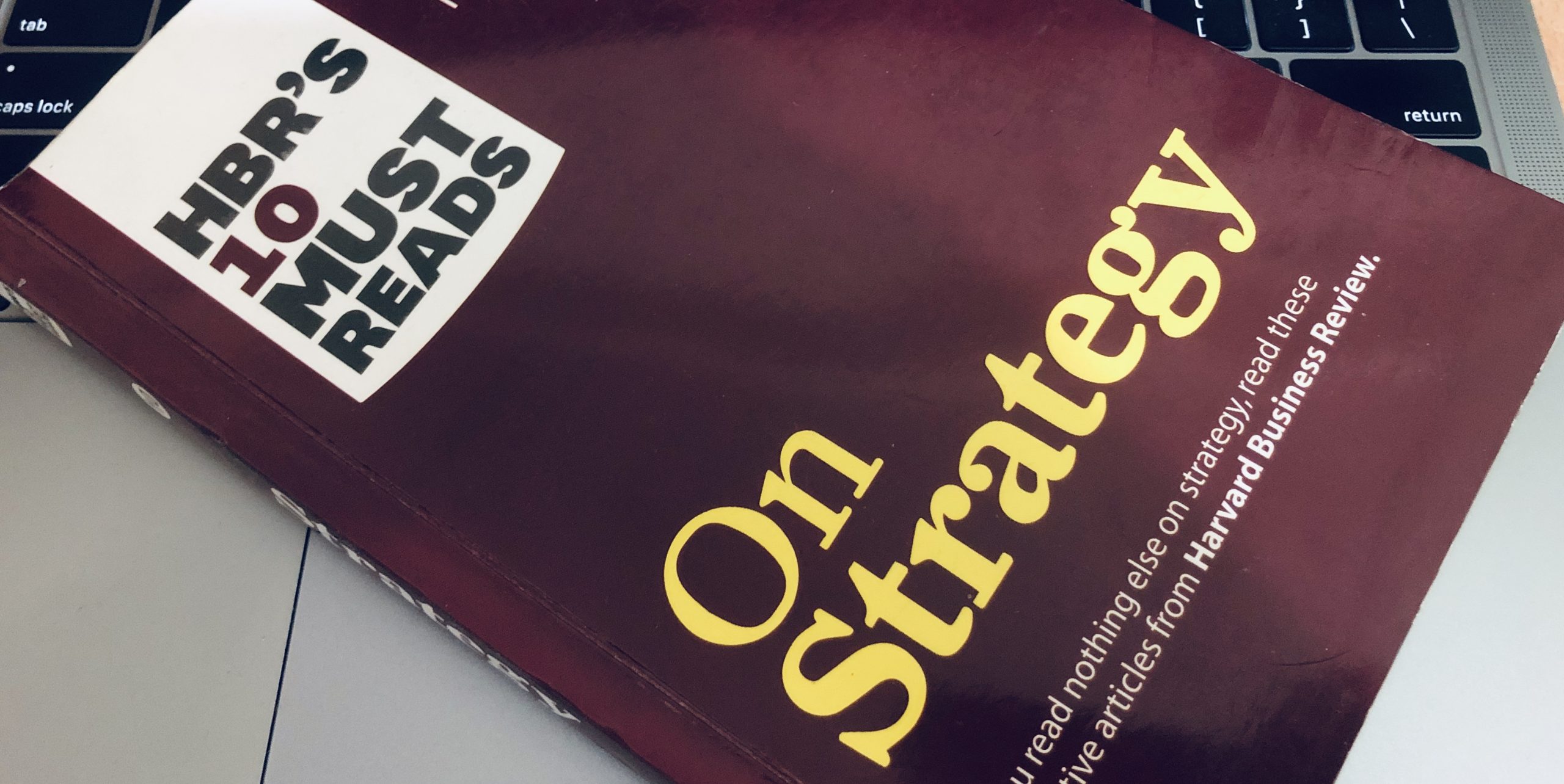This book taught me strategy 101, yes, I am not joking, trust me, I never read such a book purely on strategy ever. So what is it? Let me define the strategy by my very own style. Strategy is making trade-offs in competing. Strategy is creating fit among a company’s activities. And the essence of strategy is choosing what not to do. Strategic fit among many activities is fundamental not only to competitive advantages but also to the sustainability of those advantages. The success of a strategy depends on doing many things well– not just a few– and integrating among them. If there is no fit among activities, there is no distinctive strategy and little sustainability. Do you disagree with me? I am sure you are not!
Ok, the exciting part was when I found 30+ real business cases/scenario as an example of great ‘the five competitive forces’ that shape strategy! This chapter was like I know Mr.X for so many years as a banker but just discovered that he is a polymath! If you are struggling to make a decision whether you would stay in the market or quit then this chapter of this book is for you, make the decision!
If I consider this book a community then the chapter ‘Building your company vision’ is like a temple of the community. Vision provides guidance about what core to preserve and what future to stimulate progress toward. But vision has become one of the most overused and least understood words in the language, conjuring up different images of different people. A well-conceived vision consists of two major components; core ideology and envisioned future. Core ideology defines the enduring character of an organisation. Core ideology provides the glue that holds an organisation together as it grows, decentralises, diversifies, expand globally, and develops workplace diversity. Then what is core values? Core values are the essential and enduring tenets of an organisation. A small set of timeless guiding principles, core value requires no external justification; they have intrinsic value and importance to those inside the organisation. A company should not change its core values in response to market change; rather, it should change markets, if necessary, to remain true to its core values. And envision future is the clear description of how the company will achieve its goal in 10-20-30 years. Make sense?
Still, it seems we are on a very basic level so, what could be the advanced level then? Well, “Reinventing the business model” could be a bit advanced chapter to talk about, right? Ok, before that, you need to understand your present business model first. I mean your customer value proposition, profit formula, and key resources & processes. And then figure out what makes your existing business model successful and which thing needs to change. Finally, decide whether reinventing your model is worth the effort or not. And make the decision. Simple, isn’t that?
Now I wanna drag you down at the ‘Blue ocean strategy’. Let’s imagine about the ocean, beach, twilight, ships and sharks! Pretty much vacation stuff, right? Well, let’s add more colour on your vacation stuff by imagining a circus show. If you are generation Z then I’m sorry guys as you could not imagine anything about the circus show but if you are the late 80s or 90s then, the fact-based following story is your, keep my word!
Cirque du Soleio founded in 1984 by a group of street performers in Canada. This company has staged dozens of productions seen by some 40m people in 90 cities around the world. In 20 years Circus achieved a huge revenue. Cirque’s rapid growth occurred in an unlikely setting. But then the circus business was in long-term decline. Alternative forms of entertainment like sporting events, TV, and video games- were casting a growing shadow. Children, the mainstay of the circus audience, preferred play stations to circus acts. There was also raising sentiment, fueled by animal rights groups, against the use of animals, traditionally an integral part of the circus. On the supply side, the start performers that Ringling and the other circuses relied on to draw in the crowds could often name their own terms. As a result, the industry was hit by steadily decreasing audiences and increasing costs. The circus industry has been replaced by the movie theatre, standup comedy, YouTube, TV, sports, Netflix etc. The audience of circus split and made audiences for these platforms. But, the circus industry could have grown and sustained if they came up with innovation. Rather than innovation, they spent time to compete with each other by reducing the costs and after a certain period of time, the industry has been disappeared. This situation called “Red Ocean” scenario. And the thoughts of Netflix, YouTube was the “Blue Ocean” strategy/situation.
The red ocean represents all the industry in existing today — the known market space. In the red ocean, industry boundaries are defined and accepted, and the competitive rules of the game are well understood. Here, companies try to outperform their rivals in order to grab a greater share of existing demand. As space gets more and more crowded, prospects for profits and growth are reduced. Products turn into commodities and increasing competition turns the water bloody. Where the blue ocean denotes all the industries not in existing today- the unknown market space, untainted by competition.
Hey, still you are on vacation mood (?) don’t think so! Wake up, let’s start to think about your industry. Red, blue, grey or white, laughing out loud! Blue ocean strategy will help today’s companies as they struggle to thrive in an accelerating and expanding business universe.
Now let me tell about the secret of this book. Yap, ‘the secret to successful strategy execution’. I might be wrong but, you were looking for this chapter since I started to talk about this book, am I right?
Execution is the result of thousands of decisions made every day by employees according to the information they have and their own self-interest. To execute the decision more effectively I’ve found four building blocks in this book executive can use to influence those actions– clarify decision rights, designing information flows, aligning motivators, and making changes to the structure. Not clear? Then this chapter is waiting for your time, eyes and head!
Anyway, I’m very much excited to talk about the four processes of managing strategy and these are; translating the vision (clarify the vision), communicating and linking (setting goals & linking rewards to performance measures), business planning (setting targets, allocating resources, aligning strategic initiatives), feedback and learning (facilitating strategy review and learning). Chief Strategy Officer (CSO) should be more careful to clarify and update company strategy, communicate strategy throughout the company, align unit and individuals goal with strategy, link strategic objectives to long term targets and annual budgets, identify and align strategic initiatives, and conduct periodic performance review to learn about and improve strategy. So, how are you and how about your CSO? Hope all is well!
I really don’t want to tell you more on rest of the most amazing chapters of this book like ‘Turning Great Strategy into Great Performance’, ‘Who has the D’, and ‘Recipe for a Decision-making Bottleneck’ here, anymore. If you read nothing else on strategy then please read the book. Do it no matter what. If you believe in it, it is something very honourable. Our life is based on pain, passion, and purpose. Get the pain to say no to a few things to finish the book. I know you are passionate to learn something new. And yes, your purpose should be to know the basics of strategy, implications of strategy and be a leader.
All the best, Cheers!





